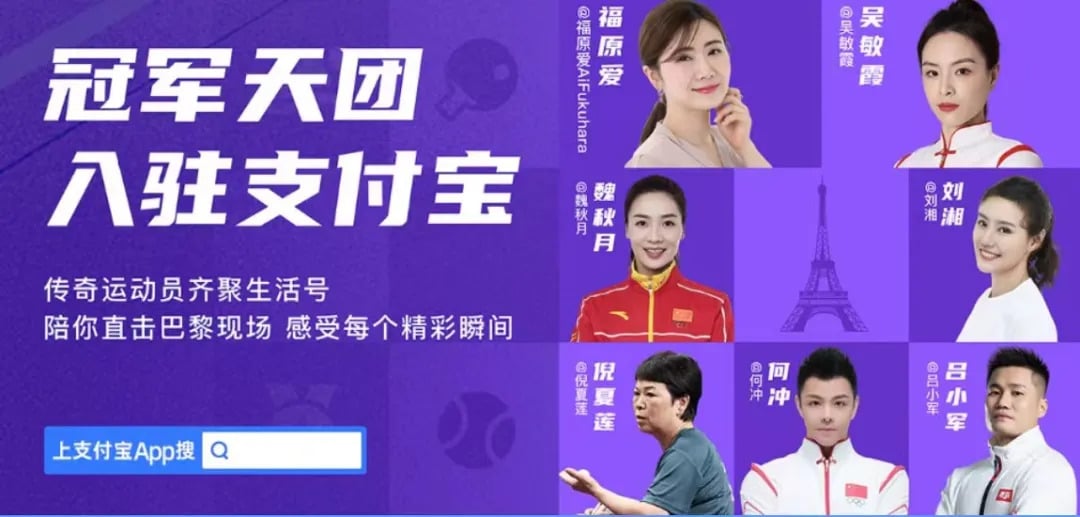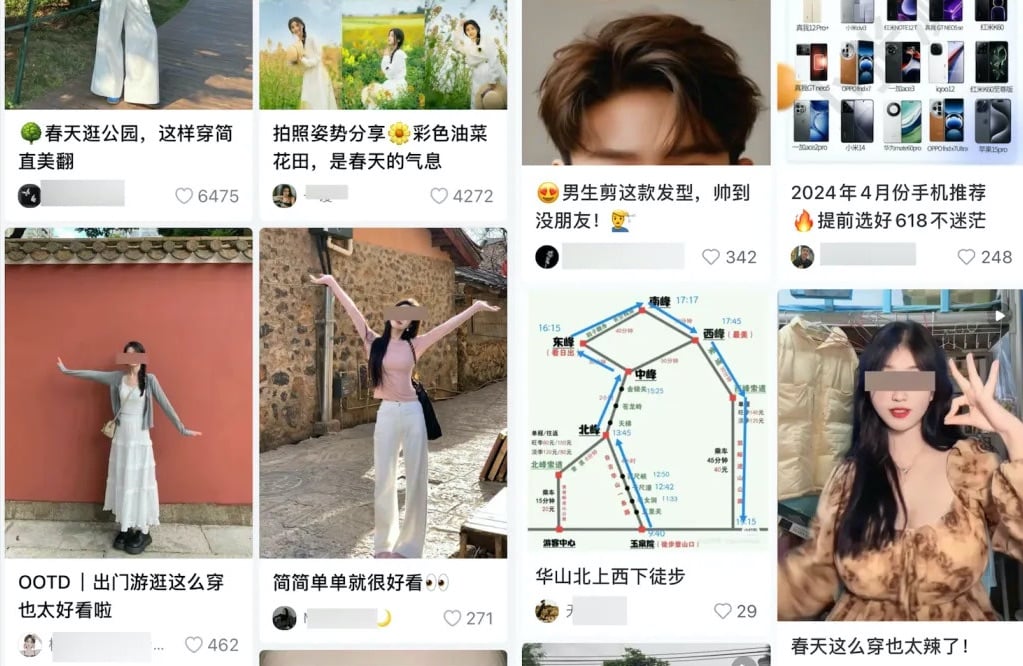Last month, content about the Olympics seemed to be everywhere in China, from billboards to social media. Perhaps your digital wallet would be the last place you’d turn for yet more Olympics content, but look no further, because even the Chinese payment app Alipay is rolling out a series about Olympic athletes.
With everything from Luxembourgian “granny” table tennis player Ni Xialian talking about her match up against Chinese superstar Sun Yinsha, to commentary on the Euro football championship back in July, even your digital wallet has become a trap for “doomscrolling.”
Creators have also found success on Alipay as an app for content creation. After Alipay announced that it is investing heavily in supporting content creators on the platform, one user reported making 200,000 RMB from the payment app, according to sports business publication ECO Keti.

Alipay is only one of many Chinese apps that have recently turned towards content creation. These tech companies are undergoing “Xiaohongshu-ification,” essentially replicating the functions of the popular social media and e-commerce platform and adding them to their pre-existing services.
For example, the Quora-esque Zhihu has rolled out the app CHAO, which many netizens view as Xiaohongshu for men. Short form internet shows are everywhere from e-commerce app Taobao to delivery app Meituan. Even TikTok, already dedicated to entertainment, is rolling out its latest app Kesong (可颂) with the slogan: “Unlock trendy, fashionable lifestyles,” directly aiming at young consumers who are largely under Xiaohongshu’s purview, reported Vista.
The functions and interfaces on these platforms are becoming increasingly similar. They encourage creators to make videos which may “plant seeds” (种草 zhǒng cǎo), that is, influence users towards buying certain products. Ultimately the goal is to keep users’ entire online experiences centralized on one app.
Social media platforms copying each other is not unprecedented, and the strategy seems to work. In 2016, Netizens were angry when Instagram copied Snapchat and created its “story” function. But these days Instagram’s Stories have far surpassed Snapchat in its original form.
Still, as more and more apps roll out content aimed at influencing users, many netizens are also expressing their frustrations towards this inundation. One user under the username “Goodname” commented: “Even my app for doing laundry has e-commerce and video functions. Not only does it take up space, but the app is taking me to all sorts of unexpected ads. I just wanted to do my laundry without getting interrupted.”
Banner image image via Qiguojiang, showing a side-by-side comparison of Kesong (left) and Xiaohongshu (right).















